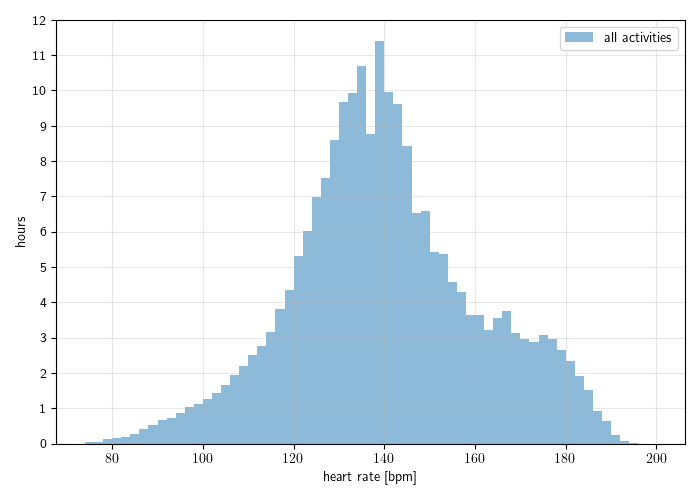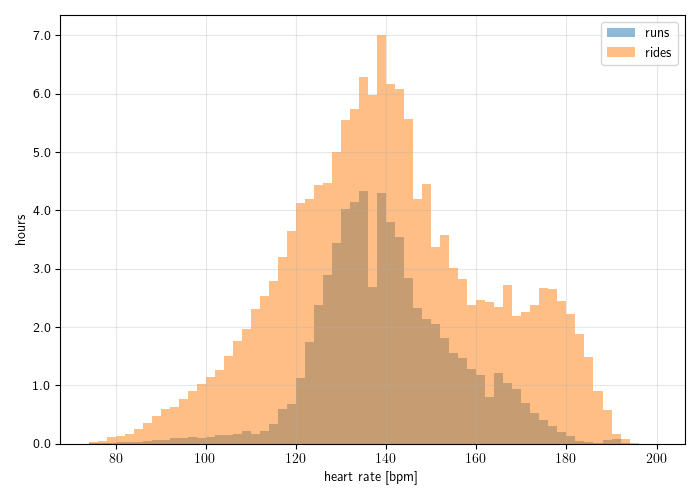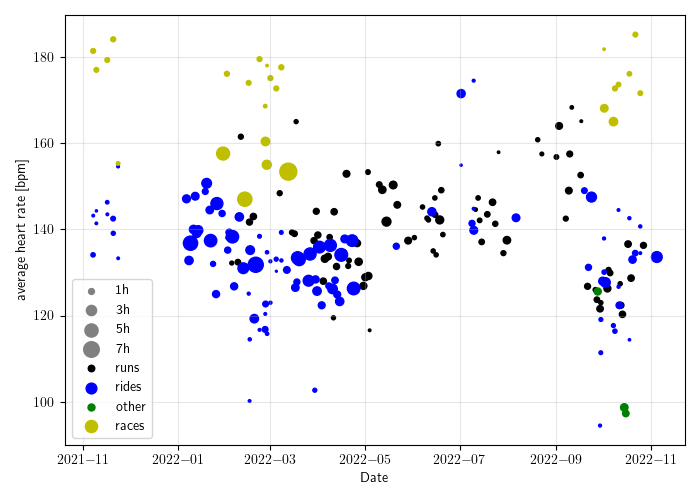Strava has a neat API which allows you to access data on all your activities in an easy manner. Since I have been reading a lot about the science behind endurance training and metabolic fitness recently, I thought this would be a good opportunity to see whether I could tease some information from my own activity data. Here is a decent guide on how to set up the API in Python.
Firstly I scraped the heart rate data from all of my activities in the past year1. Combining all of these heart rate values together I made a histogram, setting the bin size to 2bpm.
 Looking at this plot I would say that my training is definitely not polarized, I spend a lot of time in the middle region around 140 bpm. However, these activities are a mix of running and cycling, and there is a difference between the two sports in terms of intensity profile.
In the next figure I split the histogram into those two sports, we can see that the distribution for cycling is somewhat polarized, this is easily explained by the races I do, they contribute most of the high intensity peak around 180 bpm.
Looking at this plot I would say that my training is definitely not polarized, I spend a lot of time in the middle region around 140 bpm. However, these activities are a mix of running and cycling, and there is a difference between the two sports in terms of intensity profile.
In the next figure I split the histogram into those two sports, we can see that the distribution for cycling is somewhat polarized, this is easily explained by the races I do, they contribute most of the high intensity peak around 180 bpm.
 My running distribution is not polarized at all but I also barely do any high intensity running.
Overall, I think my training could benefit from some more polarization in the intensity distributions.
For me this would mainly involve doing more activities at a low intensity (120-140 bpm) and the racing plus an occasional HIT session will provide the high intensity part of the polarization.
My running distribution is not polarized at all but I also barely do any high intensity running.
Overall, I think my training could benefit from some more polarization in the intensity distributions.
For me this would mainly involve doing more activities at a low intensity (120-140 bpm) and the racing plus an occasional HIT session will provide the high intensity part of the polarization.
Another interesting plot I made shows the average heart rate of each activity on a time scale. The size of the points is proportional to the length of the activity. This is also a good way to visualize the polarization of my training, however it will be a bit skewed for longer rides due to the average washing out some details.

-
The Strava API is rate-limited to 100 accesses per 15 minutes and 1000 per day, so I broke this up into chunks and ran them spaced out. ↩